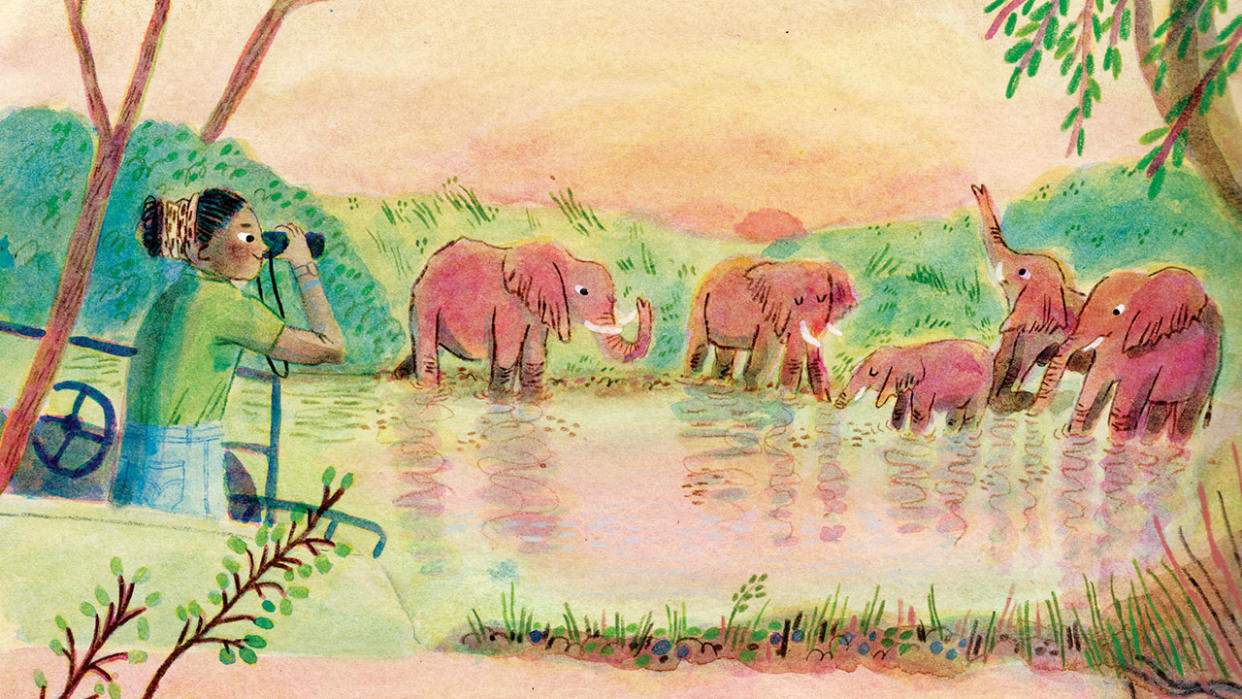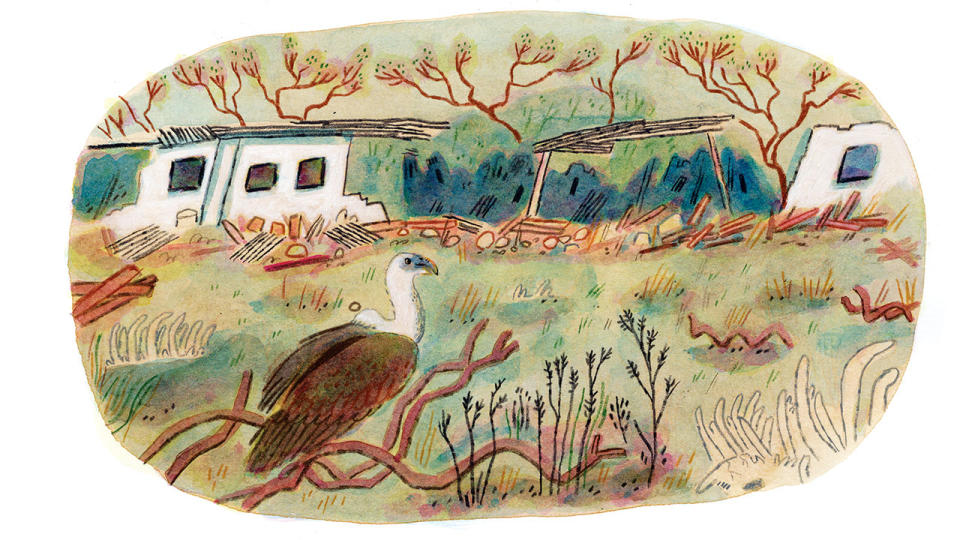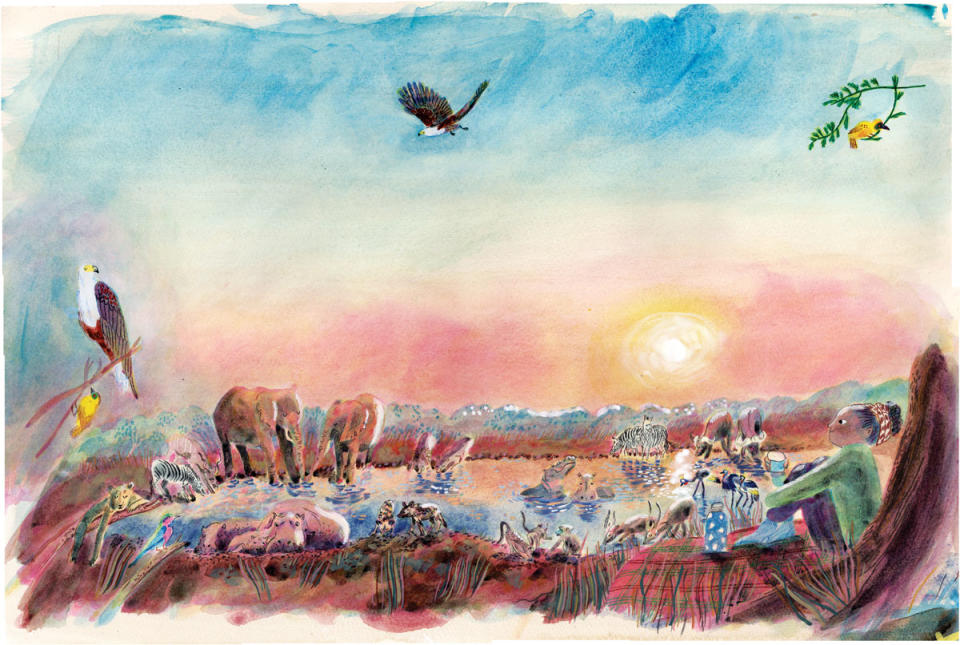'Most of Gorongosa's large animals had died': How an African paradise for nature recovered from the ravages of war

For millennia, grey wolves prowled North America, living in harmony with the natural world around them. But as the human population grew across the continent, farmers and ranchers, fearing these clever hunters would prey on their livestock, hunted and killed these majestic animals in their thousands. In 1926, a shot rang out over Yellowstone Park, and with it the last of the native grey wolves, who once roamed this spectacular wilderness, was dead.
The consequences of these actions spread much further than anyone had imagined, with elk, no longer fearing a natural predator, overrunning the landscape and leaving it barren, while emboldened coyotes fed on the smaller animals that would once have sustained other predators.
But Yellowstone today is different. It has at least eight packs of wolves that run freely across the park, all thanks to the rewilding efforts to bring them back to where they once lived, and restore a natural order to the environment.
This remarkable tale is one of 20 beautifully illustrated stories that are perfect for young children in the new book "Rewild the World at Bedtime" by Emily Hawkins and illustrator Ella Beech, in which we discover how humans have worked with nature to bring animals back to the lands where they once lived.
In this excerpt, we learn how the war that engulfed the nation of Mozambique decimated the wildlife of the Gorongosa National Park, and the remarkable efforts to bring elephants and other African fauna back to this beautiful landscape.
As the red sun drops toward the horizon, a herd of elephants gather by a lake, their reflections mirrored in the calm water. On the far side of the pool, a jeep approaches across the dusty savannah. The driver is a young woman called Dominique: a scientist whose job is to learn about and protect these majestic beasts. She switches off the engine and reaches for her binoculars.
Dominique watches as the leader of the herd flaps her ears, raises her trunk, and lets out a bellow of alarm. This wise mother elephant is protective of her family, and is wary of people. She has a long memory. She remembers a time not so many years ago when this place, Gorongosa, was a battleground.
In the 1960s, Gorongosa National Park thrummed with wildlife. People came from across the globe to gaze at lions and leopards, rhinos and elephants. This vast landscape was a paradise of lush green flood plains, grassy savannahs, wetlands, woodlands, and mountains.
But then, a dark shadow fell across the land. In the 1970s, the country of Mozambique was torn apart by a devastating civil war, which raged for sixteen years. The fighting spread into the park as the land was claimed first by one side, then the other. The war took a toll on the wildlife. Zebra and wildebeest were hunted for their meat, while elephants were killed for their valuable tusks, which were sold to buy weapons and supplies.

When the war finally ended, the park was unrecognizable. Roads had been destroyed, buildings had been reduced to rubble, and the ground was littered with the bones of lost creatures. Most of Gorongosa’s large animals had died.
Where once there had been more than two thousand elephants, now there were fewer than two hundred. The buffalo had vanished, and the rhinos, leopards, and lions had been wiped out. The landscape had changed too. Without the grazing animals, the grasses had grown tall and a thorny shrub had taken hold, sprawling across the plains in dense thickets.
But now that the fighting was over, both the people and the wildlife could begin to heal. The managers of the park tried to unite the local community, hiring ex-soldiers from both sides of the war as park rangers. They patrolled the savannahs, scaring off poachers and removing the deadly traps and snares left behind. Nature breathed a sigh of relief and, gradually, the wildlife began to return. However, the recovery was slow and the park was short of money to fix its problems.
In 2004, an American businessman called Greg Carr visited Mozambique. He had made a fortune in computer software, and he wanted to give back to a good cause. Greg fell in love with Gorongosa, and invested millions of dollars in helping the park recover. With his support, the park had enough money not only to bring back the animals, but also to build schools and provide healthcare and jobs for the people who lived in and around Gorongosa.
Over the next few years, many different plants and animals returned to the area, and scientists were hired to research these varied species. One of the new staff was Dominique. She had been born in the nearby city of Beira just as the war was ending. She’d grown up with a love of science, and had studied ecology and conservation at university. When Dominique heard about the exciting work taking place at Gorongosa, she knew that she had to be part of it. She landed a job on the scientific team, and she is now an expert on the park’s elephants.
These mighty creatures are crucial to Gorongosa's recovery. With their lumbering bodies and powerful trunks, they transform landscapes. As a herd passes through, they munch on tall grasses and chomp at thorny shrubs, making space for antelopes and other grazers. But, as Dominique would learn, although the elephant population is recovering, there are still challenges to face. Part of her job is to find ways for humans and elephants to live alongside each other happily.

Sometimes these creatures come into conflict with the people who live nearby. On Gorongosa’s southern border is a river that the elephants occasionally cross, visiting farms to raid and trample the crops. To solve this problem, staff and local people put up fences made from roped-together beehives to protect the farms. If the elephants disturb the fence, the bees become agitated and sting them, until they back off. These clever hives, as well as keeping the elephants away, provide the farmers with honey to eat and sell. Projects like this, where both the wildlife and the human communities benefit, are vital to Gorongosa.
Today, as Dominique watches the herd cooling off at the lake, she is filled with hope for the future. In the thirty years that have passed since Mozambique’s civil war ended, much has changed for the better. Wildlife populations in Gorongosa have rebounded, local people are happier, and this vibrant place is now home to a breathtaking variety of animals and plants, as well as a close-knit community of people who are dedicated to taking care of them.
Rewild the World at Bedtime by Emily Hawkins, illustrated by Ella Beech © Wide Eyed Editions, 2024

Rewild the World at Bedtime by Emily Hawkins, illustrated by Ella Beech — $19.21 on Amazon
If you enjoyed this extract, you can see more of the beautiful illustrations and inspiring stories of successful rewilding in Emily Hawkins' book. We think children will love reading tales like that of the panda school in China, and be transfixed by the beautiful pictures that Ella Beech illustrated to accompany them. The ones that show the tigers of Nepal are especially delightful.View Deal

